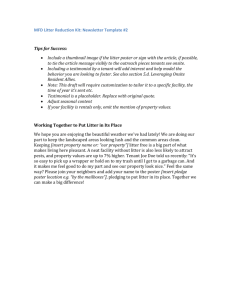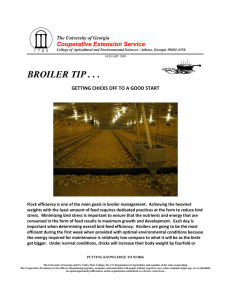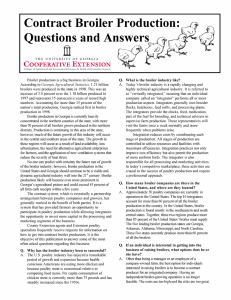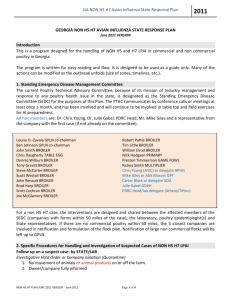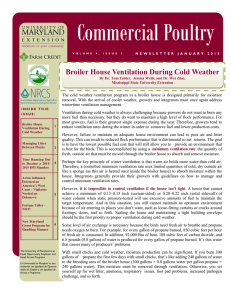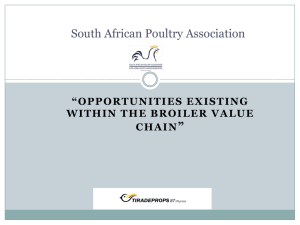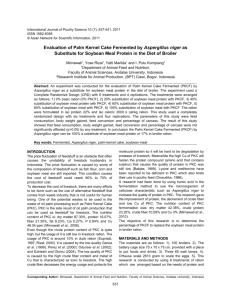poultry and livestock housing with solid waste management
advertisement
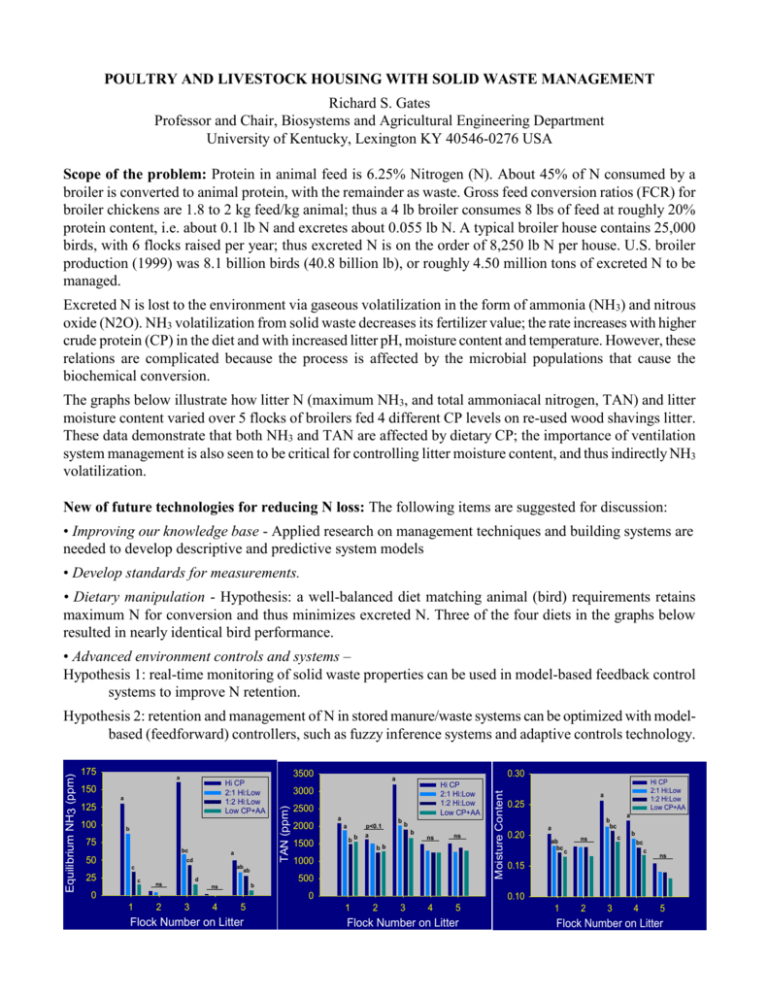
POULTRY AND LIVESTOCK HOUSING WITH SOLID WASTE MANAGEMENT Richard S. Gates Professor and Chair, Biosystems and Agricultural Engineering Department University of Kentucky, Lexington KY 40546-0276 USA Scope of the problem: Protein in animal feed is 6.25% Nitrogen (N). About 45% of N consumed by a broiler is converted to animal protein, with the remainder as waste. Gross feed conversion ratios (FCR) for broiler chickens are 1.8 to 2 kg feed/kg animal; thus a 4 lb broiler consumes 8 lbs of feed at roughly 20% protein content, i.e. about 0.1 lb N and excretes about 0.055 lb N. A typical broiler house contains 25,000 birds, with 6 flocks raised per year; thus excreted N is on the order of 8,250 lb N per house. U.S. broiler production (1999) was 8.1 billion birds (40.8 billion lb), or roughly 4.50 million tons of excreted N to be managed. Excreted N is lost to the environment via gaseous volatilization in the form of ammonia (NH3) and nitrous oxide (N2O). NH3 volatilization from solid waste decreases its fertilizer value; the rate increases with higher crude protein (CP) in the diet and with increased litter pH, moisture content and temperature. However, these relations are complicated because the process is affected by the microbial populations that cause the biochemical conversion. The graphs below illustrate how litter N (maximum NH3, and total ammoniacal nitrogen, TAN) and litter moisture content varied over 5 flocks of broilers fed 4 different CP levels on re-used wood shavings litter. These data demonstrate that both NH3 and TAN are affected by dietary CP; the importance of ventilation system management is also seen to be critical for controlling litter moisture content, and thus indirectly NH3 volatilization. New of future technologies for reducing N loss: The following items are suggested for discussion: • Improving our knowledge base - Applied research on management techniques and building systems are needed to develop descriptive and predictive system models • Develop standards for measurements. • Dietary manipulation - Hypothesis: a well-balanced diet matching animal (bird) requirements retains maximum N for conversion and thus minimizes excreted N. Three of the four diets in the graphs below resulted in nearly identical bird performance. • Advanced environment controls and systems – Hypothesis 1: real-time monitoring of solid waste properties can be used in model-based feedback control systems to improve N retention. 3500 a Hi CP 2:1 Hi:Low 1:2 Hi:Low Low CP+AA 150 a 125 100 b 75 bc 50 a cd ab ab c 25 c d ns b ns 0 0.30 a Hi CP 2:1 Hi:Low 1:2 Hi:Low Low CP+AA 3000 2500 a 2000 1500 a bb p<0.1 a b b b ns ns bb 1000 500 0 1 2 3 4 5 Flock Number on Litter Moisture Content 175 TAN (ppm) Equilibrium NH3 (ppm) Hypothesis 2: retention and management of N in stored manure/waste systems can be optimized with modelbased (feedforward) controllers, such as fuzzy inference systems and adaptive controls technology. Hi CP 2:1 Hi:Low 1:2 Hi:Low Low CP+AA a 0.25 0.20 a b bc a ab bc c ns b bc c c ns 0.15 0.10 1 2 3 4 5 Flock Number on Litter 1 2 3 4 5 Flock Number on Litter






